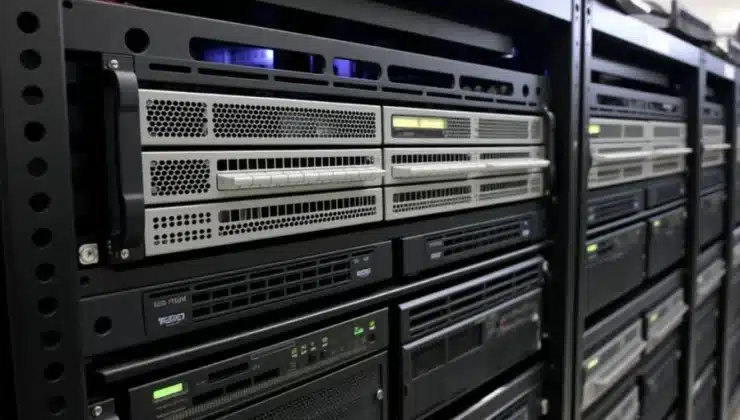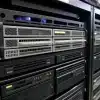Rack Colocation: When Your Own Data Center Isn’t Enough of an Answer

Imagine a data center with redundant power, industrial-grade cooling, and biometric security. Now imagine using exactly one rack within it for your servers—without million-dollar investments in infrastructure. That’s rack colocation in a nutshell. For startups, SMBs, and enterprises that don’t want to overspend on the cloud or build their own server room, a colocation server rack offers a solution that makes sense both technically and economically.
The difference between theory and practice lies in the details—and in the case of rack colocation, it’s precisely these details that determine whether your IT budget explodes or stays under control.Let’s go through what rack colocation really means, how it works, and when it makes more sense than renting an entire cage or building your own server room. The answers aren’t as straightforward as they might first appear.
What Is Rack Colocation, and Why Is It More Than Just “Renting Space”?
Rack colocation means renting a standardized unit of space in a professional data center where a company places its own servers and network components. A rack (cabinet)—a metal frame 42U high (rack units, with 1U = 1.75 inches)—has become the industry standard not only because it allows efficient hardware organization, but primarily because an entire ecosystem of services has grown around it.
Providers such as ttc-teleport.cz/en/ offer much more than just physical space—they ensure, among other things:
- redundant power supply,
- industrial-grade cooling calibrated for kilowatts of heat output,
- multiple connectivity options,
- and physical security at a level most companies could never afford on their own.
While cloud services abstract hardware completely, and renting your own server room requires managing an entire building; a colocation server rack sits precisely in the middle. The company owns and fully controls its hardware—from choosing specific server models to configuring RAID arrays. At the same time, it doesn’t have to deal with building permits, physical protection and security, diesel generators, or electrical installation certification. Data center technicians ensure that your rack receives the agreed power supply (typically 2–10 kW per rack) and guarantee the SLA, and you only manage what runs inside the rack.
So who benefits most from rack colocation? Primarily companies that have outgrown the limits of an office server room but don’t need dozens of racks. Startups appreciate the option to begin with just a few U and scale gradually. Mid-sized businesses use full rack colocation as a cost-effective alternative to enterprise cloud. Especially when running applications with predictable workloads or handling sensitive data they don’t want to entrust to third parties.
Rack vs. Cage vs. Suite – Anatomy of a Data Center
Not all colocation is the same, and the differences between individual formats determine not only the price but also the flexibility of your solution. Rack colocation represents the basic unit—you rent space measured in U (units) within a shared area of the data center. Your hardware stands next to other clients’ equipment, separated only by the lockable front and back doors of the rack.
Cage colocation
This takes privacy to the next level. You rent an enclosed space separated by a wire cage or solid walls that can hold several racks. This solution is chosen by companies that need their own access control, want to install non-standard hardware, or simply require physical separation from other clients. The price naturally increases, and you pay not only for the racks but also for the exclusive floor space.
Suite colocation
This represents the top of the pyramid—a private room or even an entire floor in the data center. Here we’re talking about dozens to hundreds of colocation racks, a dedicated power distribution unit, and often dedicated cooling. Such an investment is feasible only for large corporations or cloud service providers.
Data center colocation services therefore differ mainly in the degree of shared infrastructure. While a suite is almost like having your own data center without owning the building, rack colocation maximizes the efficiency of sharing. You share cooling rows, electrical circuits, and the physical security perimeter, but your hardware remains solely yours, with full control over configuration and data.
Real Cost Calculator
The economics of a colocation server rack look simple only at first glance. The basic monthly fee for a quarter rack (10U) is around USD 500, while a full rack costs USD 1,200–2,000 per month depending on location and service level. But that’s only the beginning—you also need to factor in the cost of the hardware itself.
How does it compare with alternatives? An in-house server room for 5 racks requires an investment of at least USD250,000 in equipment plus monthly operating costs exceeding USD 200. A cloud solution with comparable performance costs USD 2,500–4,000 per month but comes at the expense of hardware control. Rack colocation therefore represents the economic sweet spot for companies with 10–100 servers and predictable workloads.
The First Rack as a Gateway to the Bigger World
The move from servers under the desk to professional rack colocation is like moving from a garage to a real factory. You suddenly gain access to infrastructure you could only dream of before. And once you eventually grow into your own cage or suite, the experience from that first rack will guide the way.





